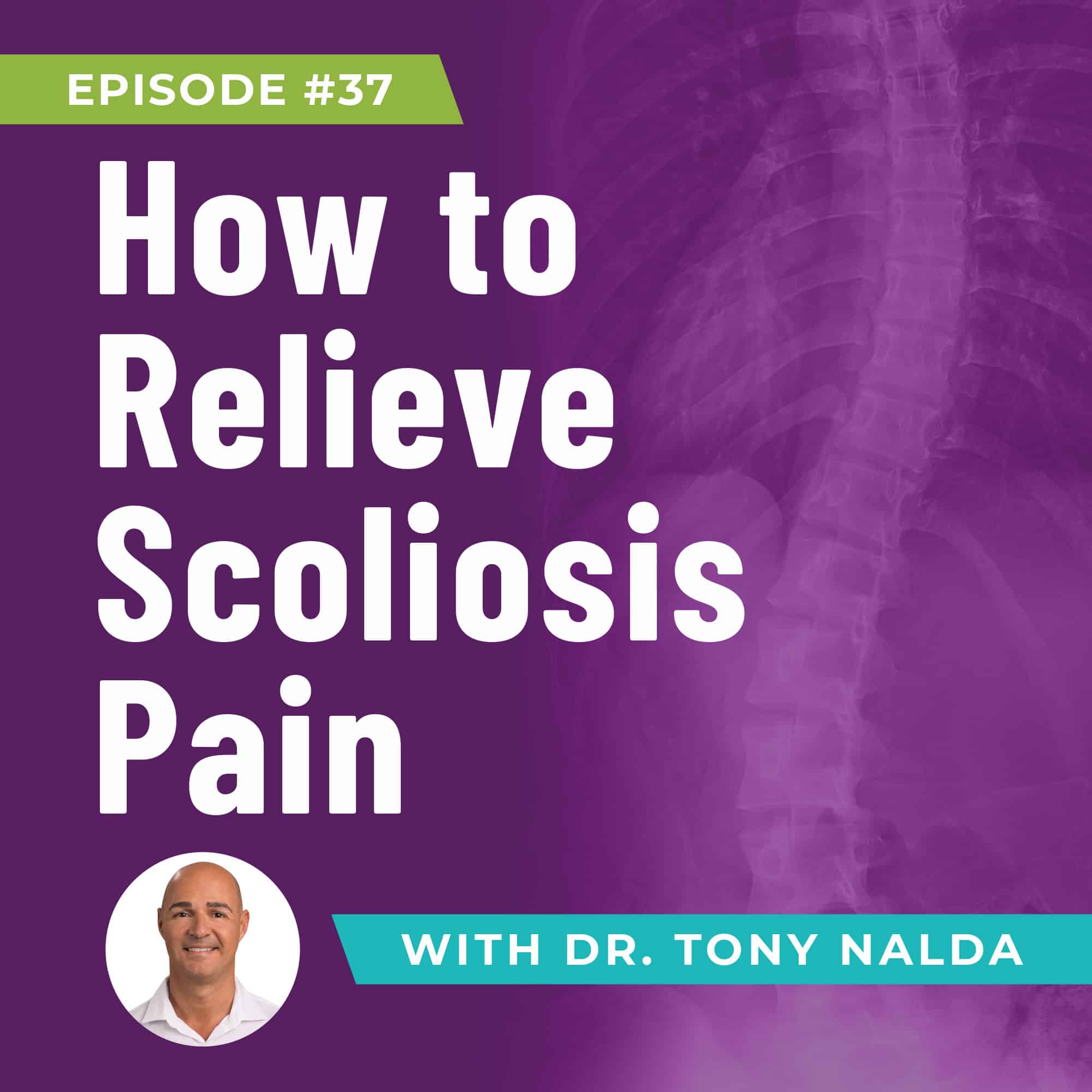Episode 37: How to Relieve Scoliosis Pain
If you have Scoliosis and you have pain, what are your options to get some relief?
There are two types of patients:
- Kids with Scoliosis who normally have no symptoms or pain
- Adults complaining about severe pain
Why do we have people with the same exact condition but feel very different?
Is Scoliosis always painful?
Every case of Scoliosis is unique.
We know Scoliosis is not commonly painful in children and adolescents. Kids don't feel pain as a result of Scoliosis. In fact, if they feel pain, it's normally very mild and it may not be any different from kids that don't have Scoliosis. Therefore, we don't expect children to experience pain. In fact, if they have pain, we normally consider that a red flag and we're normally looking for another cause.
So if you have a child who has scoliosis and they have no pain. As a result of it, don't be surprised. That's not unusual. That's very, very common. And that doesn't mean that curve isn't worsening normally with children. The only thing that you're seeing is postural signs.
When it comes to adults, the first thing that's actually causing the problem is that Scoliosis is unfortunate and can become painful. And the reason why it can become painful is because of how the curve progresses in an adult is very different than how the curve progresses in a child. The type of pain adults tend to feel is most likely back pain. It's gonna be right at the size of the curve. It can also lead to other types of issues. It can lead to pain that's capping from compressed nerves in the area of the spinal curvature.
And this compression can lead to:
- Numbness or radiating pain down into your legs or arms across your rib cage, even up into your face and head.
- It can lead to muscle pain and tightness and soreness because of the unbalance.
- It can lead to fatigue in the body. It can also lead to lower extremity pain like hip pain, knee pain, ankle pain, and foot pain
The same thing is true with your body, so you can have more pain on one leg on one side of your body, a knee and those kinds of things that could be a sign that the curve is actually progressing. In fact, sometimes in adults, that's the very first symptom they start having a unilateral hip or knee or ankle problem, and they've had no injury.
For more information about how to relieve Scoliosis Pain, check out Dr. Tony Nalda’s Podcast.
Musicbed SyncID: MB01VVBE6IWWAI6
Podcast: Play in new window | Download
Subscribe: RSS
Dr. Tony Nalda
DOCTOR OF CHIROPRACTIC
After receiving an undergraduate degree in psychology and his Doctorate of Chiropractic from Life University, Dr. Nalda settled in Celebration, Florida and proceeded to build one of Central Florida’s most successful chiropractic clinics.
His experience with patients suffering from scoliosis, and the confusion and frustration they faced, led him to seek a specialty in scoliosis care. In 2006 he completed his Intensive Care Certification from CLEAR Institute, a leading scoliosis educational and certification center.
About Dr. Tony Nalda
 Ready to explore scoliosis treatment? Contact Us Now
Ready to explore scoliosis treatment? Contact Us Now








